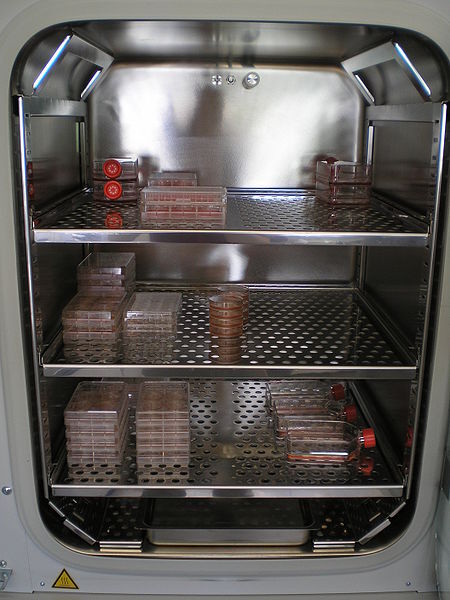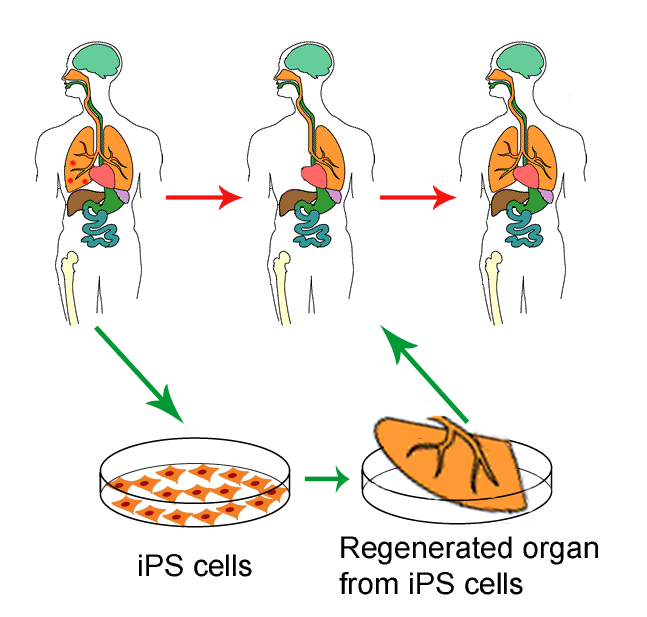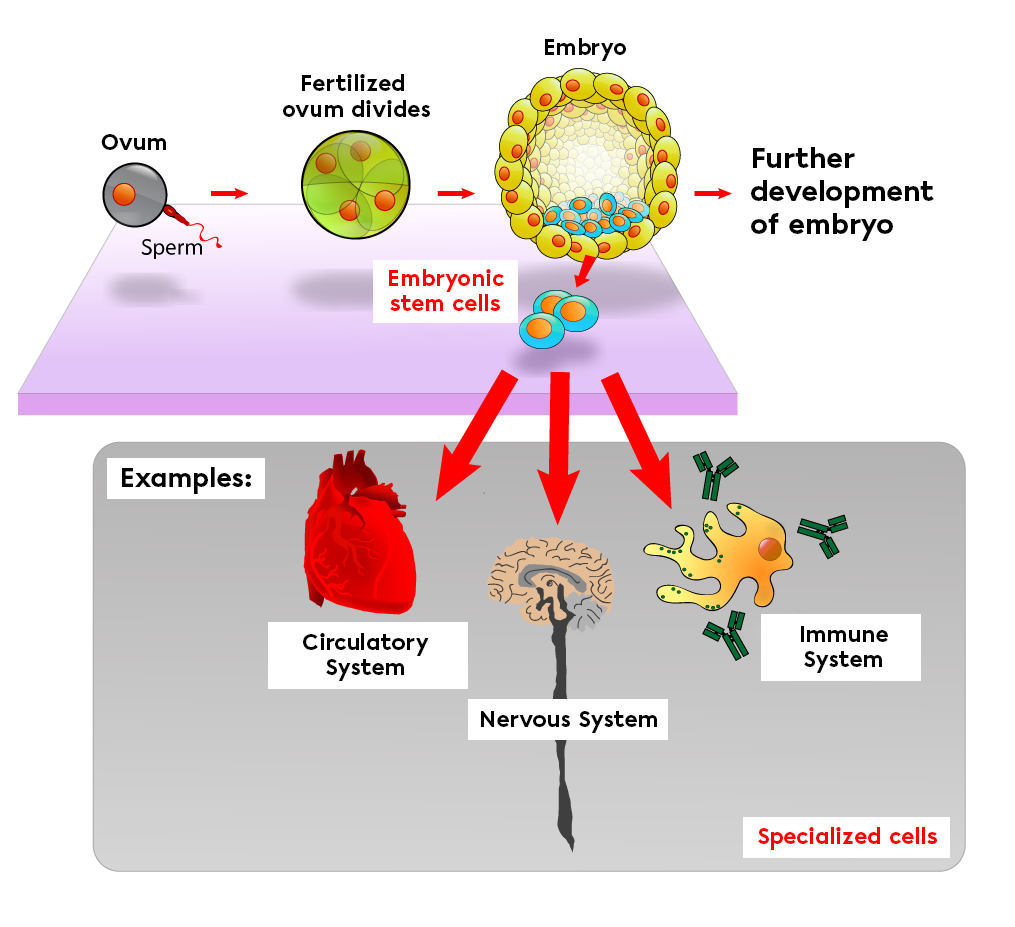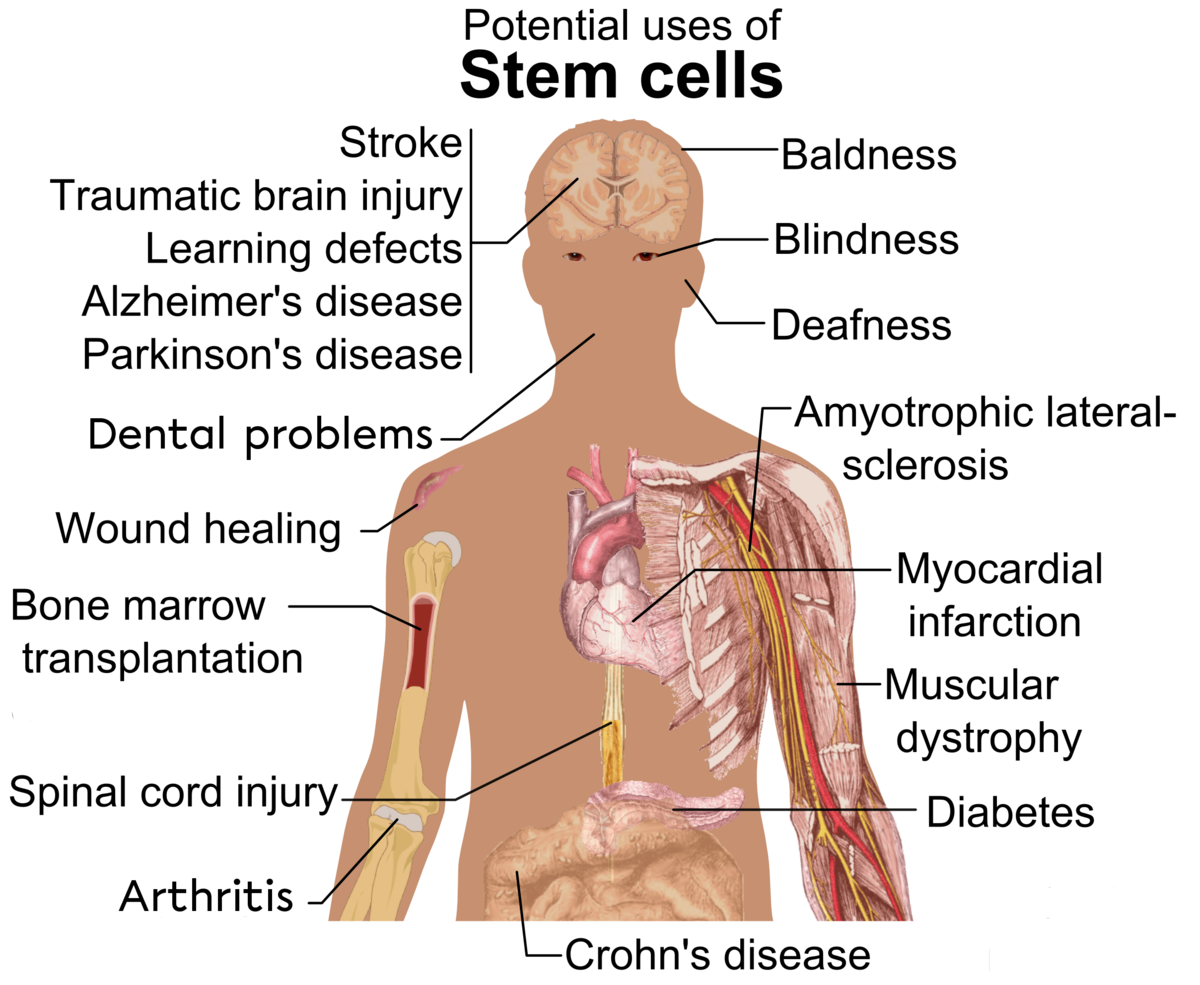Cell culture is a process that allows cells to reproduce outside their natural living environment or the organism from which they originate.
Scientists have developed the cell culture process to grow microorganisms outside of their native environment. Several types of cells can be cultivated: unicellular microorganisms (bacteria, yeasts, etc.) and cells derived from multicellular organisms (plants and animals). By cultivating them in the laboratory, we can control their growth and obtain large quantities of microorganisms or useful substances.
There are several applications in cell culture, among others:
-
enable researchers to better understand how cells function;
-
enable the testing of drugs and beauty products, or checking the toxicity of certain chemicals, and thus avoiding animal testing;
-
enable the production of certain vaccines whose viruses develop inside cells;
-
enable the production of tissues such as new skin for serious burn victims.
Cell culture takes place in several stages. It is first necessary to obtain cells and install them in an appropriate culture medium in order to reproduce the living conditions experienced by the cell in its native environment.
The method for obtaining cells differs depending on whether they come from unicellular or multicellular living organisms. Cells originating from unicellular organisms (yeast, bacteria, etc.) are directly collected from various media and transferred to an appropriate culture medium. On the other hand, in the case of organisms formed from several cells, specialists can use isolated cells, for example those derived from blood. However, they usually use cells that are related to each other and found in different tissues of the body. In this case, the first step in cell culture consists in separating these cells.

Depending on the type of cells cultivated, the collected cells should be placed in a culture medium suitable to their needs. A culture medium is therefore defined as a medium in which all necessary elements are found for the growth of cells placed in culture. The composition of culture media varies, however they contain, among others, water, mineral salts, amino acids, glucose, gases, etc. Culture media can be either liquid or solid. Generally, it is believed that a liquid culture medium promotes rapid growth of microorganisms while a solid medium is useful for counting and identifying them.


Cell culture requires reconstitution of the cell medium’s original conditions. This can be done by controlling the culture medium’s temperature, pressure, humidity, pH, nutrient and mineral composition, etc. Normal growth and efficient reproduction of cells can thus be promoted.

Incubator allowing the control of the environmental conditions of the culture (temperature, pressure, humidity rate, quantity of light)
All the procedures necessary for cell culture require working in a sterile environment, that is, a medium free from all living microorganisms. This can be done by means of various existing treatments used to sterilize the equipment needed at work.
|
Treatment and description |
Possible downside |
|
Flame treatment |
The material can melt under the heat of the flame. |
|
Dry heat oven treatment |
Material that is not heat resistant can break. |
|
Chemical treatment |
The substances used are often harmful to human health and difficult to handle safely. |
|
Steam treatment |
Material that is not moisture resistant cannot be steam sterilized. |
|
Radiation treatment |
Radiation exposure can be harmful to human health. |

Work under an extractor hood to maintain a sterile environment
In cell culture, the rate of cell growth is not constant. Rather, it is carried out according to a curve in which we can distinguish 4 phases.
-
The adaptation phase. There is hardly any cell growth as cells adapt to their new environment and settle in it.
-
The rapid growth phase. Cells divide quickly because they consume most of the nutrients present in the culture medium.
-
The stationary phase. The number of cells is constant since there are as many cells that die as there are new ones produced. This is due to a depletion of nutrients, a waste accumulation, and a lack of available space.
-
The decline phase. Nutrients and space are too scarce to maintain maximum cell count. This number decreases.
The maximum number of cells possible is reached at the end of the rapid growth phase. When the stationary phase is reached, it may be useful to stop the culture and save it for analysis or later use. Cultures can be frozen for preservation. It is also during this phase that the cells must be transplanted (transferred) into a new culture medium as the nutrients in the initial medium are depleted, which is the trigger to the decline phase.
Our body contains two types of cells: specialized cells and stem cells. Specialized cells perform special roles in our body. When this type of cell is placed in a culture, the result is cells that have exactly the same specialization as the initial cell. Accordingly, a muscle cell will only produce muscle cells. To get around this fact, stem cells can be used.

Principle of production of an organ from specialized cells
Stem cells are cells that do not play a particular role in the body. They have the capacity to divide almost indefinitely. Furthermore, under specific conditions, they can transform into specialized cells. Thanks to these two characteristics, stem cells can produce replacement tissues and organs. In adults, a few stem cells are found in the blood and bone marrow. The first cells of an embryo are also stem cells which will subsequently specialize to give rise to the various specialized cells in the body. Stem cells can, therefore, be obtained from an embryo, an umbilical cord, or a placenta.

Embryonic stem cells can develop into various types of specialized cells
The culture of stem cells raises a lot of controversy since certain moral principles may be violated as a result of this practice. For example, if we consider that the life of an individual begins with the fertilization of an egg by a sperm, the use of embryos for the culture of stem cells becomes unacceptable. Ethical standards, that is, rules aimed at ensuring that certain moral principles are respected, have, therefore, been imposed by the Canadian Scientific Research Institute in order to regulate research on stem cells.
-
The embryos used must not have been obtained through commercial transactions.
-
A pregnant woman who donates her embryo must do so willingly.
-
The pregnant woman who donates her embryo should know that it will be used for stem cell research.
-
The umbilical cord and the placenta can be used for stem cell research if both parents give their consent.
-
Human stem cells collected from an adult must be obtained with the donor’s consent.
Despite fears related to the use of stem cells, it is nevertheless true that their culture can cure certain forms of cancer, including lymph nodes and blood cancer. In addition, with the stem cells research, there is hope one day to cure diseases such as Alzheimer's disease, Parkinson's disease, multiple sclerosis and several heart diseases.

Potentially curable diseases thanks to stem cell research